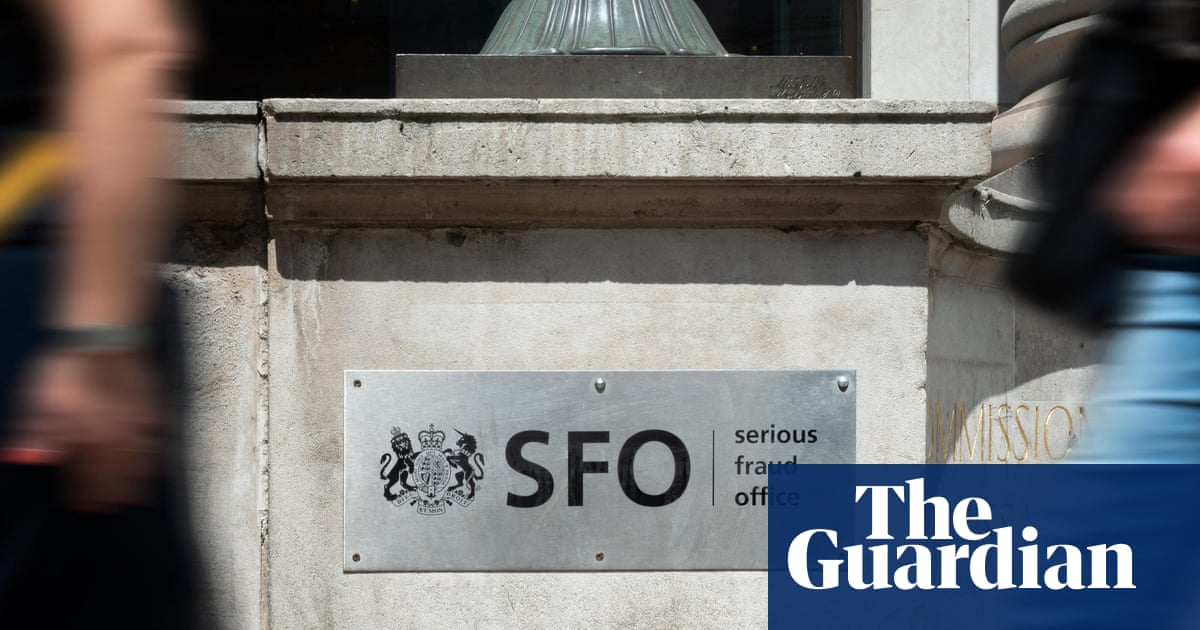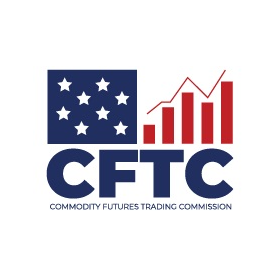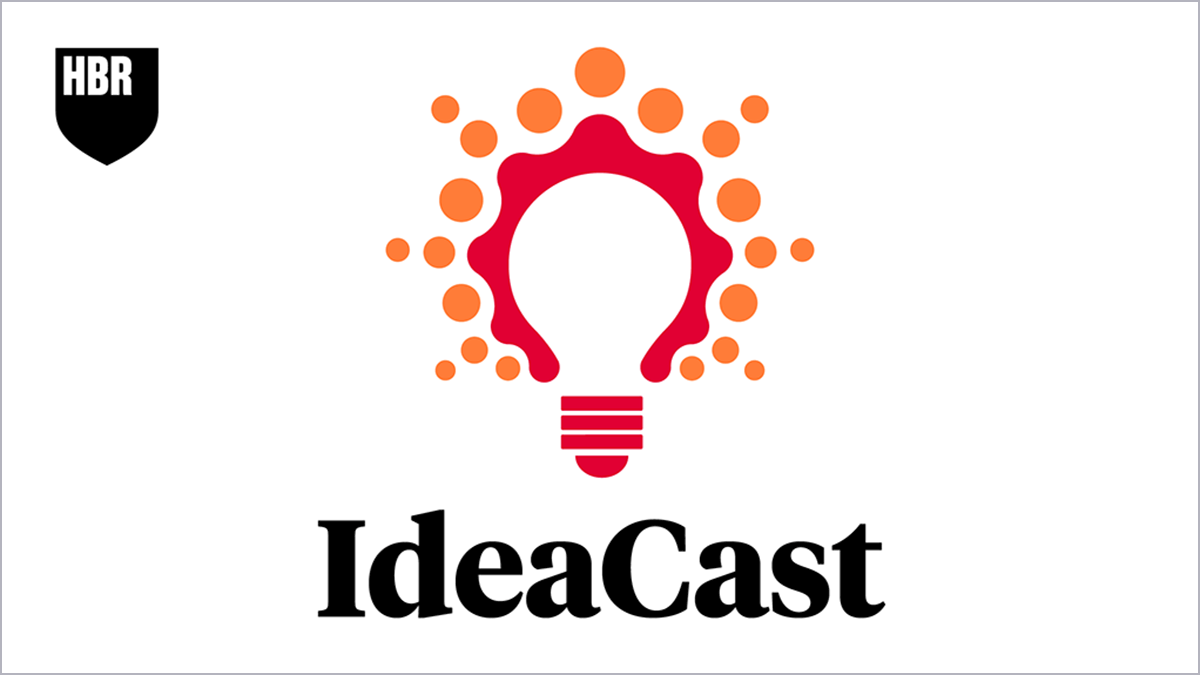ADI IGNATIUS: I’m Adi Ignatius, and this is the HBR IdeaCast.
For the next several weeks, we’re bringing you a view from the C-suite, interviews with leading CEOs across industries and geographies recorded during our recent Future of Business event. Today we’re getting inside the mind of Walmart CEO Doug McMillon, who just announced that he’ll be stepping down in a couple of months as the head of the retail giant. Walmart is the world’s largest company by revenue, its biggest private employer, and boasts 255 million customer visits per week. As goes Walmart, so goes the economy.
For his part, Doug started working in Walmart as an hourly associate in 1984, becoming its CEO in 2014. We spoke with him before he announced his retirement, focusing on how Walmart built its digital business to take competitive, how it has dealt with issues of tariffs, talent and worker pay, and the ways it has adapted its supply chain to appeal not just to shareholders, but to all stakeholders. Here’s our conversation.
Doug, thank you very much for joining us.
DOUG MCMILLON: Hey, Adi. Great to see you.
ADI IGNATIUS: So, let’s just jump right in. It’s never easy running a big company. With AI poised to disrupt, with recurring waves of geopolitical uncertainty, what does it take to lead consistently in an environment like this?
DOUG MCMILLON: I think remembering who you are is important, but also being open to change. And when I think about what AI presents, the first thing that goes through my mind is the growth opportunity. I think right after generative AI captured everyone’s attention, we were pretty balanced in terms of our mindset between offense and defense. And I think that shifted over time to being offensive in our orientation and growth oriented. We’ll talk, I’m sure, at some point about agentic AI, but there’s a great opportunity for us to change how people shop and be able to save them even more time, things like that. So, we’re excited about the opportunity that AI presents. And as it relates to geopolitical issues and things like that, there’s been turbulence now for quite a few years, and I think we’ve just learned how to operate in that environment.
ADI IGNATIUS: Well, let’s talk about AI. I mean, how do you think about it? I mean, one is tempted to think, “All right, so AI offers these tremendous efficiencies, possibly at the expense of human employment.” I mean, what is the core kind of AI thinking at Walmart at this point?
DOUG MCMILLON: Well, again, growth is the first thing that I think of. And the e-commerce experience hasn’t changed that much since it really started back in the ’90s with a search bar and a laundry list. And now we have an opportunity to create an e-commerce experience that’s multimedia, more personalized, contextual, really change the digital side of the equation, and we’re really focused on that.
As it relates to changes to employment, I really do think that every job we’ve got is going to change in some way, whether it’s getting the shopping carts off the parking lot or it’s the way our technologists work or certainly the way leadership roles change. I can imagine how AI will change every one of those jobs. And it will create new jobs. We’re starting to see some of that. All of those new jobs we’ve seen already are AI-oriented in some way. It will eliminate some tasks and eliminate some roles. And what we want to do is equip everybody to be able to make the most of the new tools that are available, learn, adapt, add value, drive growth, and still be a really large employer years from now. That’s the goal that we’re working towards. So we’ve done things like give everybody a ChatGPT license and give everyone other tools so that they can learn and grow and go through this process with us as a company.
ADI IGNATIUS: You’re heading a company that, from its founding, has always been very purpose-driven, the founding family. And you’ve articulated that as well since you’ve taken over as CEO. That must evolve, though, right? I mean, has the core purpose or maybe the auxiliary purposes kind of shifted over time and since you’ve become CEO?
DOUG MCMILLON: When Sam Walton accepted the Presidential Medal of Freedom shortly before he passed away back in 1992, he articulated a purpose for the company, as far as I know, the first time that he had articulated it. And it was basically, “We’ll show people what it’s like around the world to save money and have a better life, to live a better lifestyle.” And so, those words have become “Save Money. Live better.” We wake up every day trying to create value for all of our customers and members, but that live-better part of the equation, to your point, has changed over time.
If you look at what happened in the mid-2000s with the work we did, led by Lee Scott, to become a more sustainable company, is just one example of how the mandate broadened. These days, we obviously think about not only saving people money but saving people time, strengthening communities, strengthening the planet, playing a role in healthcare. I think the part that has changed is a more specific view of what live better means and how we can work as associates to improve lives.
ADI IGNATIUS: Yeah. And I always find it interesting to think about a very purpose-driven company with very intense profit pressures. And you must feel… I mean, I’m sure you’d love the answer to be, “We maximize both,” but there must be a push and pull. How difficult is it to keep purpose front and center when you have these short-term and longer-term profit pressures? How do you handle that balance?
DOUG MCMILLON: You know, it’s probably important to remind everyone that now a little over 10 years ago, we made a number of investments that were really sizable, all pretty much at the same time. We invested in higher wages. Eventually, that became investments in free education and things beyond just the wage rate. But we invested in our people, billions of dollars. We invested in lower prices, billions of dollars. We invested in e-commerce, billions of dollars. And we also invested to modernize our tech stack. As we did all of those things, we took the profitability of the company down. Our operating income percentage peaked somewhere north of 8%. Sam Walton once famously danced the hula on Wall Street because the management team back then hit a target of 8% or higher on operating income. And when I moved into this role, the operating income percentage was about 6%. With all those investments that I just mentioned, we went all the way down to just a little north of 4%.
So, a pretty dramatic investment that our shareholders paid for so that we could change the company and get positioned for the future. It was really pretty cool to watch the Walton family and our board of directors work through those decisions with the management team to lay out those choices and to make them and to reduce the profitability of the company so that we could position the company for the future and fulfill our purpose at the same time. We didn’t ask our customers to pay for it. We didn’t ask anybody else to pay for it. Of course, it’s really been the shareholders that paid for it.
And then, if you look at what’s happened as of late, because our business model has changed, e-commerce led to membership opportunity and advertising opportunity, other forms of income, we’ve been able to turn that operating income percentage back up while keeping prices low and continuing to invest in wages. So, that played out over a period of quite a few years and, I think, has caused us to be able to live our purpose and, at the same time, transform the company.
ADI IGNATIUS: If anything in this conversation inspires you to do a hula, feel free.
DOUG MCMILLON: That won’t happen.
ADI IGNATIUS: Well, we’ll see. We’ll see. We’re just getting started.
DOUG MCMILLON: Sam took care of that part.
ADI IGNATIUS: So, you’ve been through a number of shocks recently, right? We all have been. And the COVID pandemic is one of them, and resulting supply chain shocks. I think we’re all looking at companies like Walmart that import a lot, to what extent are tariffs changing your business, either overtly or not so overtly. Maybe talk about, since the tariffs thing is still kind of ongoing, start with, what lesson did you take guiding Walmart through pandemic, supply chain shocks before? What did you learn from that experience that’s maybe relevant now going forward?
DOUG MCMILLON: The thing that comes to the top of the list for me is just how capable our associates were. That includes our store associates, supply chain associates, Sam’s Club associates. It also includes our leaders. And what I experienced is just how good their judgment was and how fast they could make decisions.
Before the pandemic, I thought we were moving quicker. We want to move with speed, never really satisfied as it relates to that. But during the pandemic, everything just sped up so much and there were so many decisions to make about how to keep people safe, how to manage the supply chain, everything during that period of time, how to help with COVID testing, how to eventually help with immunizations.
And we picked up the cadence of the company. And as we were all operating on Zoom, my leadership team and I were too. And we went from what was a weekly, monthly cadence to a daily, weekly cadence. And we were together every morning surfacing choices that needed to be made. And we didn’t know, as others in the world didn’t, all the answers to those questions, immediately, of course. And so we just were forced to delegate more. “Hand this choice to this person or someone else in the company. Tomorrow, tell us what you decided and why you made that decision. But don’t wait to act.”
And wow they made a lot of really good decisions quickly. And then if I look at this most recent circumstance as it relates to tariffs, yet again, the team is showing that they can manage these quantity decisions, change the country of origin, move production where they should, make really good choices about timing and flow. And our inventory has been really well managed during the course of this year, which is so important as a retailer. If you get over-inventory, you end up with all these additional costs, markdowns and many other costs. If you have too little goods, you end up missing sales opportunities.
And the way they’ve managed through this whole ever-changing complex situation, too, has been impressive, just like it was during the pandemic. Here in the US, a little more than two-thirds of what we sell is made or grown here. Today we operate in 19 countries. But the vast, biggest part of our business, I should say, is in Walmart US. And that more-than-two-thirds number helps, but that other third that comes from around the world, including countries like China, Mexico, Canada, Vietnam, and some others, more than 100 countries, by the time we get through with it all, that fluid decision-making related to where those goods come from has been really well managed. And so, I’ve just learned to trust people even more than I did on the front side of it.
ADI IGNATIUS: Yeah. Well, I want to talk a little more about that because you have… Sometimes the tariffs are set and it’s clear, it’s 10%, it’s 50%, it’s 100%. Whatever it is, you know what it is and you have to eat that cost and pass it on or not. But then it’s the huge uncertainty, and it’s hard to tell, at least in Washington, are these negotiation tactics, are these real? It feels like the level of uncertainty, that must be so profound for you, right? Sourcing so much from all over the world. How do you handle that level of acute uncertainty in your planning? Because it’s uncertain, but then it’s going to get locked in down the road before long.
DOUG MCMILLON: Yeah. Well, let’s use the example of seasonal merchandise. Take yourself back to the spring and pretend that you’re the Halloween costume buyer for Walmart. How many costumes do you buy? Where do they come from? What price points do you think they’ll be at? Because by the time you receive them, which is when the tariff is assigned, it could be a different tariff number. So, we run what-ifs. “If the tariff is this amount, here’s what would probably happen with pricing.” Then, “How many units would we sell if we had that price? Where else could we source them from? What will people buy if they’re under inflationary pressure?”
We’ve learned, as we’ve gone through different things over the years, for example, that families prioritize their children and their pets before they prioritize the parents. And a mom usually puts herself last. And so, these trade-offs happen throughout the family. So, we were confident there would be trick-or-treating and children’s costumes would sell, but we might not sell as many adult costumes, for example. So, we just kind of all talked through those independent decisions and hold hands, pick a number, and make a decision. And as I mentioned earlier, so far, everyone’s done a really good job of generally getting things right.
ADI IGNATIUS: So, I feel like we’re all, all of us who are leading businesses in a period where transformation is perpetual. It’s not like, “Okay, we figure out the technology, we adapt it, and there you are.” How do you think about that, trying to make sure that transformation isn’t just kind of lurching from project to project but is an evolving and sustainable capability?
DOUG MCMILLON: You have to be willing to change so many things. I’m remembering, as you asked the question, what it was like to move into this role almost 12 years ago. We were running negative comps in our U.S. Supercenter business. We didn’t have much of an e-commerce business to speak of. We had some challenges in international where I had been.
And there were a lot of questions about strategy and transformation. And what the leadership team and I decided to do fairly early on was to explain to everyone what wouldn’t change. Because the list of things that needed to change was really long. And if you started talking through all that, it’d feel pretty overwhelming. So, what we said to everyone was, “We believe in this timeless purpose that our founder Sam Walton gave us. We will stay committed to helping people, helping people save money and live a better life. We believe we’ve got the right four core values, and we want our culture, our behaviors to match those four values. So the Walmart that you joined in terms of how people are treated and how we want you to lead, that’s going to stay consistent.”
By the way, part of those values include striving for excellence. So the bar is high, expectations are high, but we respect the individual. We act with integrity. We serve the customer. Those values are going to be consistent. Everything else is open for change. If customers don’t want stores in the future, we won’t have stores.
So, we started out really trying to play catch-up on e-commerce and build an e-commerce business. And that led to understanding, largely informed by spending time with startups and digital companies and other e-commerce companies, that we had to literally change the way we worked. We needed design as a capability. We needed product management. We needed some roles that technology companies had and have that we didn’t have in the company.
And we’d grown up running the business with operations, our store leadership team, and our merchants making a lot of the big decisions, when really we needed to change the way we thought and worked to put the customer and member in charge and work backwards to build the right tech. And that caused more organizational change than what I anticipated in the beginning. So it kind of put a punchline on your question. One of the things you have to do as a big company is to set yourself up to change all the time and not just once. So that means constant learning, constant mindset shifts, changes to structure, new capabilities, just a faster pace of organizational change so that you don’t fall behind again.
ADI IGNATIUS: Before we started this event today, we asked our audience what issues they wanted to hear most about. It was interesting, AI was… You wonder, “Is AI overhyped? Do people, are they tired of hearing it?” The answer is no. They really want insight. So, I’m going to actually go to a couple of audience questions, if it’s okay, that relate to AI. And one of them, and it picks up… You had said that you’re making AI, large language models available to your employees. But there’s a question from Lior Arussy, not sure from where. Whose responsibility is it to kind of adapt the new technology? Is it about, in your case, Walmart, investing in change management, making it happen, forcing it to happen? Or is it up to the employees to stay current and relevant? Do they have to kind of show that spark of interest in the new technology?
DOUG MCMILLON: Yeah, great question. It’s obviously both. If you’ve been inside Walmart, maybe just at the beginning of this year, for example, we were all learning a lot. One of the great things about being here is you have access to all the leaders that are responsible for building the frontier of artificial intelligence. So you get access to ask questions and learn. And we were all doing that, my direct reports and I. And when we got to the springtime, we realized we needed some additional resource. We knew top-down what we wanted to do. We wanted to reinvent how e-commerce works and how shopping works for customers. We wanted to equip our associates. We wanted to drive productivity, of course. We want to manage inventory better. We had these big objectives that we could click down on and explain. But so many of us were doing these things on top of all the other things we’d been doing before this wave of change came our way.
So we decided to create a new role that reports directly to me that we announced just maybe a couple months ago. And that role is one filled by Daniel Danker, who came to us from Instacart and had worked at Uber and Facebook before then. He’s a product management leader. He’s a really good thinker. He’s a problem solver. He’s native AI, lives in the Bay Area. And his responsibility includes speeding up our AI transformation. While we’re not a company that should be investing to build all this compute and invent the frontier, we do need to be the best in the world at application. And so, Daniel’s taking on that responsibility for how we turn this into an AI organization. Product management, design, tech prioritization, and the change management related to AI fit within his responsibility.
So, what we might’ve done years ago where we had all these tech stacks that we had picked up by buying companies around the world, Suresh Kumar and the team, the technologists, had done a great job in recent years of modernizing that tech stack, getting us on the road to have platforms that work everywhere. And now we can infuse that with AI in a way that causes more speed. So, from a top-down point of view, we know what our priorities are, and we’re resourcing that change and we’re driving it. And it’s what we spend most of our time talking about.
At the same time, we have 2.1 million associates around the world, and we are giving them all the tools that we can give them and being transparent about what we expect from them as it relates to their learning journey so that we do this together. And I expect that we’ll get some goodness from just great ideas. I was just reading a note this morning about an idea that one of our associates in a Sam’s Club has here in the U.S. that she would like to see us implement in our app. That kind of stuff will happen, and those top-down initiatives will be driven because we’ve resourced it differently. But again, it causes the company to have to work in a different way than we would have before. It’s just constant change.
ADI IGNATIUS: Here’s another audience question. This is from Gavin Dia. And it really follows up on what you were talking about. To what extent does Walmart plan to go beyond access to tools, some of these investments, bringing in some of these high-level people to kind of structured upskilling programs to prepare the workforce for this AI-integrated future?
DOUG MCMILLON: Yeah. We have something called Walmart Academies, where we teach curriculum to all of our associates. We’ll be using those academies to create, some kids already have, create specific programs so that people can learn and understand what capabilities that they need to be building. And we also provide something called Live Better U, where we pay for college tuition and books so that people can go get a degree if they wanted to get a degree.
And we’ve had some people move into technology roles. I’ve been running into people in the field that want to work in cybersecurity. We have been creating a lot of technicians in the company to fix all the equipment that we’re running, whether that’s the automated storage and retrieval systems that we are deploying in our distribution centers or the HVAC equipment we’ve got in stores. There’s more talent needed in the world to do that kind of work. And so we’ve been teaching people and certifying them on how to do that and, in some cases, have started to sell those services outside the company and have what may grow into a profit center.
ADI IGNATIUS: This is another question from an audience member, Ginger Tave, who notes that in the current issue of Harvard Business Review, we have an article about hands-on leadership. And as CEO of one of the largest corporations, I think it’s interesting that you have the Walmart employee tag on right now. What percent of time do you spend really on the front line? And how valuable is that? How relevant is that from your position?
DOUG MCMILLON: Yeah, it’s vital. I mean, if you know anything about our history, you know that Sam Walton was in the stores all the time and became a pilot to move around faster. And we’ve got airplanes and we’re flying out of Arkansas, if I use the US as an example, all the time to go visit stores and clubs on a surprise basis. On social media, you’ll see some of those visits and you’ll hear people say things to me like, “You should come see the real world.” 99% of the time, nobody knows we’re coming, including me. We just show up in a market. We show up in the first store, Sam’s Club, “How are things going?”
Go straight to our associates that are either helping people check out or picking orders for an e-commerce order or whatever. I love that part of the job. I’ve just lately been in Mexico, Canada, and China. And the conversations always lead to something. I always leave one of those visits with a list of to-dos that’s longer than the list that I leave, if anything, because the things I learn we can use to help the whole company.
ADI IGNATIUS: I would say Walmart gets praised for pursuing its environmental and social goals. It gets criticized for pursuing its environmental and social goals, depending on who’s commenting. We’re in a somewhat different environment in terms of the expectations of how companies think about engagement, again, in environmental and social issues. How do you navigate this? You’re going to get criticism from all sides, and I know you want to stick to your purpose. But the ground is shifting. How do you navigate this barrage?
DOUG MCMILLON: It hasn’t been that difficult because it’s just all super-practical. The work we were doing before was good for the P&L. It’s been good for the company, and it still is. So, when this whole conversation started back in the early 2000s, I would say we were going through a maturation process. Just like any startup does, you focus on your customers and you focused on your associates, your employees. And we were like that too. And we’d grown into this big size, opening one store at a time, but we still acted in some ways like an inexperienced company. And then Lee Scott and Rob Walton and others caused us to start thinking about the fact that we had this big footprint and there were things we could be doing that would make our business better and also strengthen the planet and strengthen communities.
And I tell this story all the time, but I remember leading Sam’s Club at the time, and I’m embarrassed to tell you, we were paying people to haul off the corrugate behind our Sam’s Clubs as brown boxes came to the back of the club and we baled them up. And as we were going through this learning journey and going to visit landfills and reading books and getting more informed about what we could do given the size of the company, we started realizing how much value there was in that corrugate. And we went from paying somebody to take it to charging them to take it away because it was worth so much. And my P&L benefited by $50 million in one year just because we learned something. We had spots like that, but that was 20 years ago, that we’ve continued to uncover and learn as we’ve grown.
So, whether I’m talking to a member of the media or I’m talking to someone that works in government, if we’re getting criticized for something, I just get really practical. Wouldn’t you expect Walmart to be eliminating its waste? Yes. It helps us save money so that we can lower prices. It’s a good business choice. So, all of this work that we’re doing, that lens of how does this strengthen the business and how does it help the customer or associates, that all matters. And sometimes it just boils down to time perspective. And I’m in a really good situation here because of the board that we’ve got and the Walton family’s investment where I can think more long term. And once you start thinking longer term, these things all just make a lot of sense.
ADI IGNATIUS: Doug, you and I first met shortly before you took on the CEO role, and we did an HBR interview soon after you took over. When you took over, I’m sure you had a vision of what you wanted to achieve. Now looking back, you’ve had to adapt, we need to be adaptable, what advice would you share with other leaders who are trying to lead major transformations? What maybe even is a trap that they should avoid as they try to push toward the future?
DOUG MCMILLON: Listen to your gut. The thing that most of us, I think, as we get to more time in role that we regret is not going faster. And while not everything was clear, back when you and I first met, I was really focused on how do you build an e-commerce business and turn it into an omni business leveraging the assets we had, including the stores. And that was a lot of work. But what I didn’t really understand is it was going to lead to this bigger change in the way the company worked, and figuring that out with our team here and just taking steps to try and get faster and to become more digital in nature.
We use a phrase around here, “We’re people-led and tech-powered.” We want to be great at deploying technology. We want to be the best at that. And we want to start with the humanity of this experience, whether it’s the customers we serve or the associates that we have. This is about people. And the tech is to serve people. So people-led, tech-powered. There were things that I just didn’t know back then. And once I did know them, I was sometimes too slow to act because I was worried about what someone thought or “Can the organization handle this much change?” And what I’ve learned is that people can handle it. And you need to go hard. You need to go fast. And when you know something’s right in your bones, you need to act on it and don’t delay too much.
ADI IGNATIUS: Yeah. So, I remember that when you were trying to become a digital powerhouse, you hosted an event in Davos and brought people in and basically said, “We’re really good at brick and mortar. We’re not good at digital. Help us out.” I mean, nobody goes to Davos and says, “We’re not good at something.” So I thought that was refreshing. But talk about it. Are you happy with where you are now in terms of digital commerce or-
DOUG MCMILLON: No. No, but remember, I’m compensated to be dissatisfied. So, that’s the nature of the work. We just have so much room to improve. I mean, we’ve made progress, and our customers are having a better experience. And Walmart is known today with our customers for being convenient at about the same intensity level as we are known for having low prices. So, that’s progress, and I don’t want to skip over that. Thank you to our associates for what’s been done. But we can just be so much better. And this opportunity to get AI right is a great one.
ADI IGNATIUS: And back to AI. So, here’s another audience question. This is from Hilda Ingham. And this is down to the lower level. People fear change. I mean, we know that. We feel like our companies have a secret sauce because we do things a certain way and then somebody’s trying to force change on us. How do you help people embrace change where it’s not just, “Okay, the board has figured this out. The C-suite has figured this out. Go”? How do you bring people along understanding that they fear change, some will adapt, some won’t? How do you handle that part of it?
DOUG MCMILLON: I joke with our folks here that “I love change, except when it relates to me. I don’t really want to change. I just want all of you to change.” I think being really honest about things is important, and being consistent is important. And let’s take artificial intelligence and the situation that we’re in right now. There’s so much we don’t know. Literally, you mentioned earlier this question about “How much of this is hype?” Well, the hype curve is real. We’ve seen that repeat itself over time. So, certainly there’s some investment here that’s happening that’s not going to work. But big picture, it feels like to me that a lot of this is going to work and we should have this mindset that it will work and be moving that direction to try and make that true so that our customers serve better.
And I think if you’re honest about it, you remind everybody what you’re trying to do. “What it is we’re trying to do is to serve customers and members better so that we grow, which creates more opportunity for everyone. So let’s lean into this together and let’s learn as we go.” So, the rhythm of company comes to mind. How often are you together? How often are you together in person? We really believe in being together in person, including with our associates and our store managers. We bring people together during the course of a year. We’ve got a calendar that works and is designed with purpose to cause us to build relationships, earn trust, shoot people straight, go through it together, remind them of the big picture of what we’re trying to accomplish. And then if something goes wrong or doesn’t work, just acknowledge that, put it to the side and move on to the next thing. But I don’t know how else to do it. I think you’ve got to be really straightforward, really honest. Give people what they need, encourage them, support them, but lean into change because the alternative is not very enjoyable.
ADI IGNATIUS: That was Doug McMillon, CEO of Walmart, speaking to me as part of the Future of Business event at Harvard Business Review. Check in next Thursday for another Future of Business episode.
If you found this episode helpful, share it with a colleague and be sure to subscribe and rate IdeaCast in Apple Podcasts, Spotify, or wherever you listen. If you want to help leaders move the world forward, please consider subscribing to Harvard Business Review. You’ll get access to the HBR mobile app, the weekly exclusive insider newsletter, and unlimited access to HBR online. Just head to hbr.org/subscribe.
And thanks to our team, senior producer Mary Dooe, audio product manager Ian Fox, and senior production specialist Rob Eckhardt. And thanks to you for listening to the HBR IdeaCast. We will be back with a new episode on Tuesday. I’m Adi Ignatius.
















